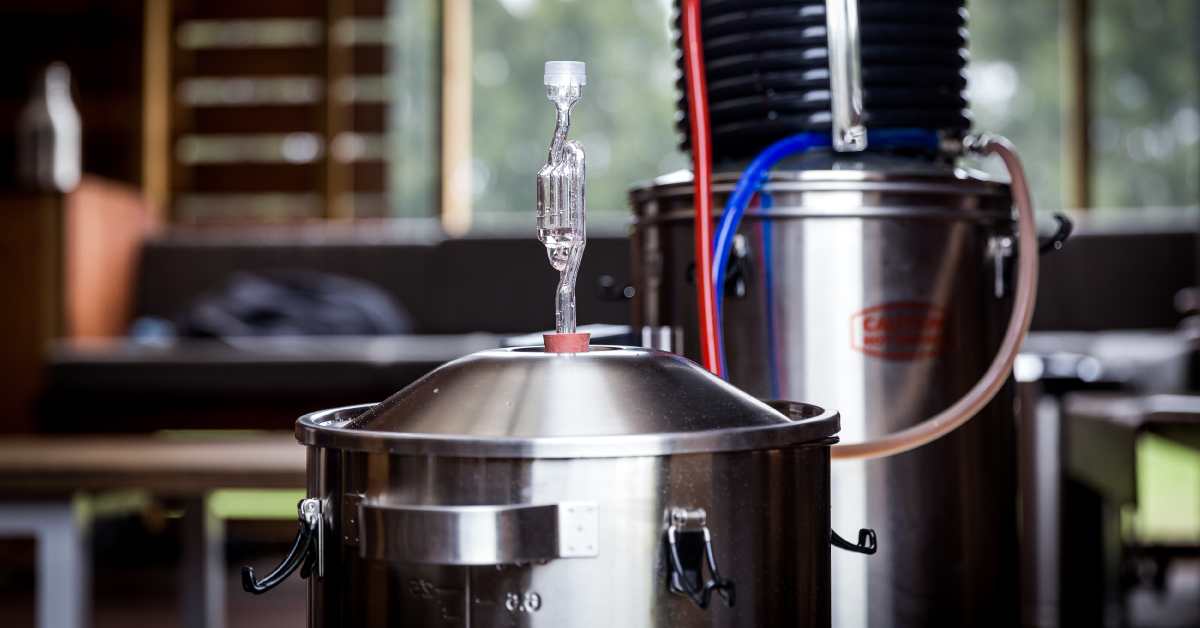
The basic beer fermentation process is the same as a normal yeast fermentation process. To begin the fermentation process the cooled wort is transferred into a fermentation vessel to which the yeast has already been added.

As a business they are also trying to sell as much of their product as possible and less beer fermentation time means more brews.
Process of beer fermentation. Fermentation is a process whereby yeast converts glucose in the wort to ethyl alcohol and carbon dioxide gas CO 2 to give beer its alcohol content and carbonation. The fermentation process starts when cooled wort is transferred to a fermenting vessel and yeast is added. The process of beer fermentation simplified.
To start the fermentation process beer yeast is added while the fermentation vessel is feeling filled. During fermentation yeast converts the sugary wort into actual beer by producing alcohol a wide range of flavours and carbon dioxide which is used later in the brewing process to carbonate the beer. After fermentation is complete the liquid is called Green Beer.
The basic beer fermentation process is the same as a normal yeast fermentation process. Glucose is converted into ethanol alcohol and carbon dioxide a gas. However a lot more happens during fermentation than just the formation of these two molecules.
The brewing process typically takes around 90 minutes. After this the brewed grains are removed from the liquid called wort. Now it is a sugary liquid ready to be fermented into delicious beer or a mash that can later be distilled into whiskey or vodka.
A beer wort steeping at the right temperature. Fermentation is the process by which yeast converts the glucose in the wort to ethyl alcohol and carbon dioxide gas – giving the beer both its alcohol content and its carbonation. To begin the fermentation process the cooled wort is transferred into a fermentation vessel to which the yeast has already been added.
As a business they are also trying to sell as much of their product as possible and less beer fermentation time means more brews. In most cases the minimum time that you should leave your beer to ferment is about 10 days. The initial vigorous fermentation process may be over in 4-5 days but the yeast are still happily working away.
Fermentation Fermentation is the process whereby sugars are converted by yeast to alcohol carbon dioxide and heat. In the brewing of most traditional beer the sugars are derived mainly from malted barley although other cereal sources and other plant sugars can also be used. Fermentation Boiled strained and cooled wort is transferred to the fermentation vessel and yeast is added.
Yeast helps to convert wort sugar into alcohol releasing carbon dioxide during the process. Bottling and aging After fermentation beer need to mature in order to develop flavor and for carbonation effect. Four Stages of Beer Fermentation cont 2.
Log Accelerating Stage Yeast cells and beer temperature increases up to the maximum. Beer is cooled to keep temperature constant all the time. Foam is seen on surface of beer.
Stationary stage Beer gravity will drop. Beer is a carbonated alcoholic beverage obtained by alcoholic fermentation of malt wort boiled with hops. The basic beer production process makes use of the constituent ingredients of barley.
Yeast is the secret behind high-quality beer production. It ferments malt sugars producing carbon dioxide and alcohol. Yeast produces a whole range of flavoring components during fermentation.
It includes esters phenols and a wide selection of other chemicals.